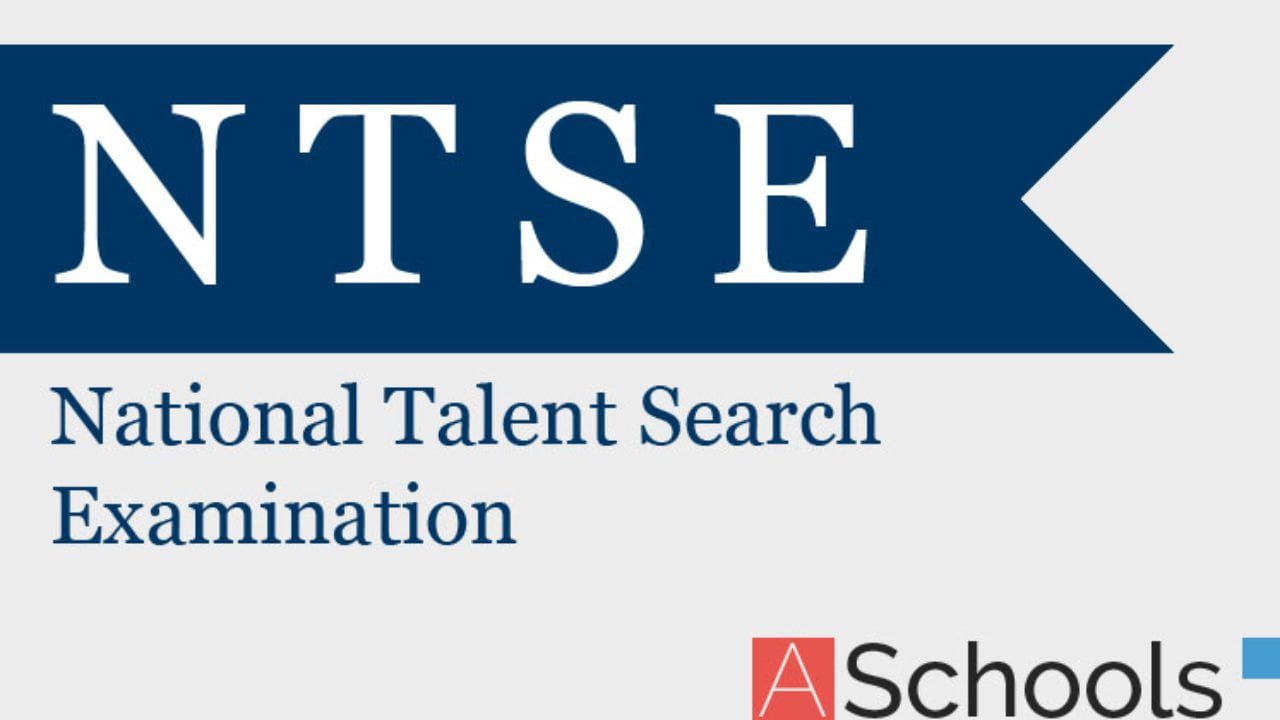The National Talent Research Exam held on two levels-
State level (stage 1)
National level (stage 2)
The NCERT (National Council Of Educational Research And Training)has announced an increase in scholarships under the NTSE exams.
From this year scholarships have been increased from 1000 to 2000.
The amount for the scholarship had been enhanced last year
Scholarships are as follows- 15% for SC, 7.5 % for ST, 27% for other backward classes and 4% for disabled.
The 1st stage of the exam is held on the first Sunday of November all over India except in the Union Territories of Nagaland, Andaman, Nicobar, Meghalaya and Mizoram where it is conducted on the first Saturday of November
No negative marking is there
Mental ability and scholastic aptitude are tested.
Stage-2 is held on the second Sunday of May
Candidates who qualify for the first level are eligible to sit for the second level
The NTSE exams are conducted in 13 languages
The ntse exams is an offline exam with objective type questions
Both levels of the exam have MAT and SAT i.e Mental Ability and Scholastic Aptitude Test.
5000 students are selected at the first level and from this year 2000 students will be selected from the 5000 students who qualify for the second level of the exam
NTSE Exams Syllabus
- The syllabus of NTSE is based on the 10+2 curriculum of NCERT.
- Students are advised to go through each and every topic while preparing for the exam.
- NTSE consists of multiple-choice questions which are asked from the subjects like Mathematics, Science, Social Science, English, General Knowledge and Mental Ability syllabus.
- Following is the detailed explanation of all the topics of different subjects along with the weight-age of the particular topic:
Mathematics Syllabus
NTSE Mathematics section contains around 30 questions which include the topics from class 6 to 10.
| Topics | Weight-age | Topics | Weight-age |
|---|---|---|---|
| Algebraic Expressions | 5% | Percentage& Its Application | 8% |
| Arithmetic | 15% | Playing with Number | 1% |
| Arithmetic Progressions | 1% | Probability | 1% |
| Basic Geometry | 15% | Quadratic Equations | 8% |
| Circles | 1% | Rational Numbers | 1% |
| Coordinate Geometry | 1% | Simple & Compound Interest | 2% |
| Direct& Inverse Variations | 0% | Square & Cube Roots | 3% |
| Exponent | 1% | Statistics | 1% |
| Linear Equation | 3% | Surface Areas and Volume | 4% |
| Mensuration | 10% | Triangles | 1% |
| Number System | 9% | Trigonometry | 9% |
Science Syllabus
In the science syllabus, topics are included from Physics, Chemistry and Biology. This section contains around 35 questions.
| Topics | Weight-age | Topics | Weight-age |
|---|---|---|---|
| Acid Bases and Salts | 2% | Metals & Non Metals | 5% |
| Air | 4% | Micro-Organisms | 3% |
| Carbon and its Compound | 6% | Motion and Force | 3% |
| Cellular Level of Organization | 4% | Our Environment | 5% |
| Diversity in Living organisms | 2% | Periodic Classification of Elements | 2% |
| Fibres and Plastics | 1% | Reproduction | 5% |
| Food Production & Management | 1% | Soil | 1% |
| Heredity and Evolution | 1% | Some Common Diseases | 7% |
| Human Body | 7% | Sound | 2% |
| Life Processes | 4% | Sound of Energy | 4% |
| Light | 5% | Structure of Atom | 3% |
| Acid Bases and Salts | 2% | The Universe | 1% |
| Magnetic & Electricity at Work | 5% | Water | 4% |
| Measurement | 3% | Work and Energy | 6% |
Social Science Syllabus
In this subject, topics are from History, Civics, Geography, Economics and General Awareness. This section contains around 35 questions.
| Topics | Weight-age | Topics | Weight-age |
|---|---|---|---|
| Agriculture | 2% | Local and State Government | 1% |
| Atmosphere | 3% | Medieval Architecture and Culture | 1% |
| Biosphere | 1% | Motion of the Earth | 3% |
| British raj | 5% | Nationalism in Various Countries | 2% |
| Culture, Science and Literature | 1% | Natural Vegetation | 3% |
| Democracy and Elections | 2% | New Empires and Kingdoms | 2% |
| Diversity and Livelihood | 2% | Our Country- India | 4% |
| Early Medieval Period | 3% | Popular Movements and Social Reforms | 2% |
| Early States | 1% | Population | 1% |
| Eighteen Century Political Formation | 1% | Resources and Development | 5% |
| French Revolution | 1% | Solar System | 1% |
| India and Its Neighbours | 2% | The Delhi Sultanate | 3% |
| Indian Constitution | 4% | The Judiciary | 2% |
| Indian Economics | 4% | The Maurayas | 2% |
| Indian Freedom Struggle | 5% | The Mughal Empire | 5% |
| Indus Valley Civilization | 4% | UN and International Agencies | 1% |
| Industrial Revolution | 2% | Union Government | 2% |
| Industries | 1% | Vedic Period | 2% |
| Internal Structure of the Earth and Rocks | 2% | Water Resources | 2% |
| Introduction and Sources of Ancient Indian History | 2% | World History | 3% |
| Jainism, Buddhism and Conquerors from Distant Lands | 2% | – | – |
English Syllabus
| Topics | Weight-age |
|---|---|
| One Word Substitution | 30% |
| Paragraph Completion | 5% |
| Reading Comprehension | 10% |
| Rearrangement of Jumbled Words | 5% |
| Sentence Completion | 10% |
| Synonyms | 15% |
| Antonyms | 15% |
| English Grammar | 10% |
General Knowledge Syllabus
| Topics | Weight-age |
|---|---|
| India | 40% |
| World | 20% |
| Abbreviations | 10% |
| Awards and Recognitions | 10% |
| Books and Authors | 10% |
| Sports | 10% |
Mental Ability Syllabus
| Topics | Weight-age | Topics | Weight-age |
|---|---|---|---|
| Alphabets and Number test | 1% | Figure Partition and Dot Situation | 1% |
| Analogy(Non Verbal) | 5% | Mathematical Operations | 3% |
| Analogy(Verbal) | 5% | Missing Character | 9% |
| Blood relations | 9% | Paper Folding and Cutting | 2% |
| Calendar, Time and Clock | 1% | Ranking and Arrangements | 7% |
| Classification | 9% | Series (Verbal) | 7% |
| Coding-Decoding | 7% | Series(Non Verbal) | 8% |
| Cube and Dice | 5% | Venn Diagrams | 2% |
| Direction Sense | 7% | Water and Mirror Images | 4% |
| Embedded Figure | 5% | – | – |
NTSE Recommended Books
Books play a very important role in the preparation of any kind of examination. The following table shows the names of the books which every aspirant must study:
| Name of the Book | Publisher |
|---|---|
| Study Package for NTSE Class X (English) 1st and 2nd Edition | Mc Graw Hill |
| Practice Papers NTSE X (English) 1st Edition | TMH Books |
| The Pearson Guide to NTSE Class 10 (English) 1st Edition | Saurabh Priyadarshini and Navi C. Joshi |
| NTSE Explorer: MAT + SAT + New English Language Test for class 10th ( English) | Sonia Lal |
NTSE Result
- Those students who have successfully qualified for the test are eligible for scholarships.
- Students will be selected for the scholarship on the basis of the final merit list.
- Once stage 2 results will be announced, the final merit list will be prepared accordingly.
- The merit list will be published on the website. It will not be sent through the post.
- To check the examination result, students can visit the official website of NCERT i.e. www.ncert.nic.in.
- Students have to enter their Registration number and Date of Birth to check the result.
- The result will be available in PDF file format.
By following the below steps students can easily download their NTSE 2021 Result:
- Visit the official website of state government/ Union Territories.
- Click on the link ‘NTSE 2021 Result’
- After clicking on the link, students will be redirected to the next page.
- Enter the required details i.e. Roll number, date of birth
- Click on the submit button.
- NTSE exams Result will be displayed on the screen.
- Download the same for future reference.
NTSE Cut off
Cut-off marks are the minimum marks that are required by candidates to clear the examination. The cut off marks will be declared by the respective states. The final cut off mark will be declared by NCERT after the completion of the stage 2 examination. NCERT publishes category wise and subjects wise cut off marks.
The factors affecting the state wise cut off marks are as follows:
- Students appearing in the exam
- The difficulty level of the paper
- Marking scheme
- Number of seats available
NTSE exams 2021 Expected Qualifying Cutoff
| Category | Cutoff |
|---|---|
| General | 40 |
| OBC | 40 |
| SC | 32 |
| ST | 32 |
The following table shows the category wise and subjects wise 2018 cut off marks:
Category wise cut off marks
| Categories | Total Score of MAT and SAT Cutoff | Maximum marks out of 197 of MAT, SAT |
|---|---|---|
| General | 150 | 186 |
| General- PH1 | 111 | 144 |
| General- PH2 | 78 | 124 |
| General- PH3 | 101 | 131 |
| SC | 122 | 149 |
| SC- PH1 | 71 | 113 |
| SC- PH2 | 87 | 87 |
| ST | 113 | 145 |
| ST-PH1 | 90 | 93 |
| ST-PH2 | 81 | 81 |
Subject wise cut off marks
| Test Papers | Maximum Marks | Qualifying Percentage | |
|---|---|---|---|
| ST/ SC/ PH | General | ||
| Paper I MAT | 49* | 35% (17.15) | 40% (19.6) |
| Paper II English | 50 | 35% (17.5) | 40% (20.0) |
| Paper II Hindi | 50 | 35% (17.5) | 40% (20.0) |
| Paper III SAT | 96** | 35% (33.6) | 40% (38.4) |
| Total Marks | 145 | 35% (50.75) | 40% (58) |
Dr.PREETI TALWAR



